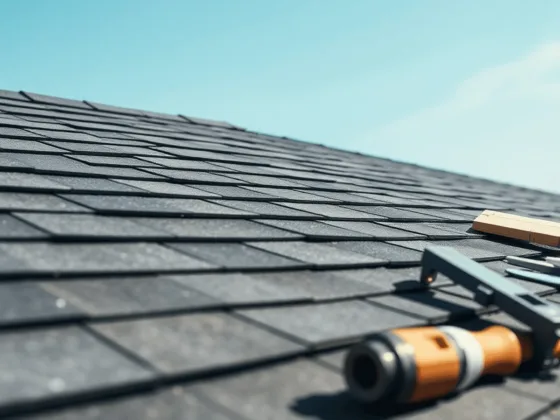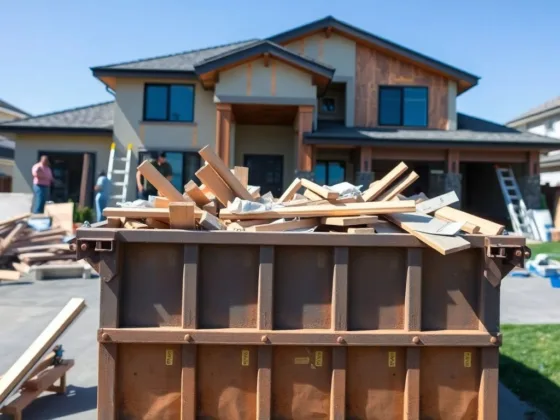Table of Contents Show
Are you thinking about renovating your bathroom but don’t know where to begin? Do you want to ensure that your space is both functional and aesthetically pleasing, with the perfect bathroom vanities and fixtures?
To achieve the results you want, it’s important to plan and carry out your bathroom remodel carefully. By knowing the key components and order of activities involved, you can tackle this challenging project with confidence.
Understanding Your Needs and Setting a Budget
Before discussing the remodeling process, it’s crucial to assess your needs and set a realistic budget.
Assessing Your Needs
- Consider factors like your household size, lifestyle, and aesthetic preferences.
- Define what you need in your new bathroom regarding functionality and design.
- Creating a wish list can help you prioritize the aspects that matter most.
Setting a Budget
- When setting a budget, include fixtures, labor, materials, and potential contingencies.
- This financial planning acts as a roadmap, helping you make informed decisions throughout the process.
Gathering Inspiration and Designing the Layout
Inspiration is a vital part of any remodel.
- Explore different styles and themes, browsing magazines, websites, or social media platforms for ideas.
- Keeping your design consistent with the rest of your home ensures a harmonious look.
Layout planning is another crucial step.
- Consider the available space and how to maximize its utility.
- From the position of bathroom vanities to that of showers and toilets, every element should seamlessly fit.
Consulting with bathroom vanities experts like Bathroom International can aid in creating an efficient floor plan while avoiding common design pitfalls.

Selecting the Right Bathroom Vanities
Choosing the right bathroom vanities is crucial as it greatly affects both the appearance and functionality of the space.
Here are some key factors to consider when selecting bathroom vanities:
- Complementing Elements: Ensure that the vanity complements other elements like tiles, paint, and lighting in the bathroom.
- Size and Style: Size and style are two major factors to consider when picking bathroom vanities. Make sure your selection offers enough storage while fitting comfortably in your layout.
- Materials and Finishes: Materials and finishes are also critical; choose durable options that can withstand moisture and frequent use.
- Countertop Choice: Adding the right countertop enhances the visual appeal and utility, rounding off your vanity choice elegantly.
RELATED: Bathroom Storage 101: Things to Consider When Buying a Vanity
Choosing Fixtures and Finishes
Incorporating coordinated fixtures and finishes can elevate the design of your bathroom.
- Think beyond aesthetics and focus on quality and durability as well.
- Whether you prefer contemporary or traditional styles, consistency in taps, faucets, and other accessories unifies the look.
- Consider installing water-efficient fixtures if you aim to make your bathroom more eco-friendly. These elements not only reduce water consumption but also contribute to an environmentally conscious footprint.
RELATED: 4 Bathroom Features that Can Transform Any Space
Hiring Professionals or Going DIY
Deciding whether to hire professionals or undertake a DIY project is another significant step.
Consider factors such as:
- Project complexity
- Personal skills
- Time constraints
If your remodel involves plumbing or electrical changes, it’s best to hire licensed professionals for safety and compliance.
For simpler tasks like painting or assembling furniture, DIY can be a fun and budget-friendly choice.
Obtaining Necessary Permits
Certain remodeling projects require permits, especially if they involve structural changes or updates to plumbing and electrical systems.
- Research the specific requirements in your locality to ensure compliance.
- Acquiring necessary permits early in the project avoids potential legal complications later.
- It’s advisable to consult with a contractor or local authorities to navigate this often complex process efficiently.
Demolition and Disposal
With your plan in place, the actual work can begin, starting with demolition.
- This step involves removing old fixtures, cabinets, and finishes to make room for the new ones.
- To avoid damage to reusable elements, handle them with care during removal.
- Disposing of materials responsibly is essential.
- Research recycling options or donate fixtures in good condition to minimize waste.
Managing the Installation Process
Successful management of the installation phase revolves around coordination and timing.
- Follow the plan meticulously, starting with rough plumbing and electrical wiring, followed by wall finishes, flooring, and finally, fixtures and fittings.
- Sticking to the sequence is key to avoiding issues like fitting components that block each other.
- Monitor the progress consistently and adjust as necessary to keep the project on schedule.
- Enlisting a reliable contractor to oversee this phase is highly recommended if the complexity seems overwhelming.
RELATED: 10 Ways Your Bathroom Can Get a Facelift for Less Than $1,000
Adding Final Touches
The final stage of your bathroom remodel involves adding finishing touches.
- This step brings your design to life, infusing personality into the space.
- Incorporate decorative elements such as mirrors, light fixtures, and accessories that enhance the aesthetics.
- Plants and artwork can add warmth and character, making your bathroom a comfortable sanctuary.
- Keep functionality in mind while choosing door handles, towel racks, and other hardware to maintain optimal utility.
Testing and Final Inspection
Once the remodel is complete, thorough testing and inspection ensure that everything is functioning efficiently.
- Check all plumbing fixtures for leaks and ensure the electrical installations meet safety standards.
- Inspect the finishes to guarantee they are free from flaws or damages.
- Consider hiring a professional inspector for an unbiased evaluation, especially if you’ve undertaken a more extensive renovation.
Tips for a Stress-Free Remodel
To alleviate stress during your bathroom remodel, maintain clear communication with professionals and vendors involved.
- Setting realistic timelines and sticking to agreed schedules prevents unnecessary delays.
- Expect some disruptions and prepare temporary solutions, especially if it’s your only bathroom.
- Stay flexible and open to adjustments if problems arise; even a well-planned remodel can encounter unexpected issues.
- Finally, keep the end goal in mind—a luxurious, functional bathroom that meets your needs and reflects your style.
Conclusion
To successfully remodel your bathroom, you need to combine practical strategies with artistic decisions. The right vanities and fixtures will not only enhance the functionality of the space but also add a touch of elegance. Understanding the entire process will empower you to transform your bathroom into a place that brings you joy. Begin your planning today to increase the value of your home.
FAQs
Before starting a bathroom remodel, assess your needs based on your household size, lifestyle, and aesthetic preferences. Create a wish list of desired features, and set a realistic budget that includes fixtures, labor, materials, and contingencies.
You can gather inspiration by exploring various styles and themes through magazines, websites, and social media platforms. Keeping your design consistent with the rest of your home will ensure a harmonious look.
When selecting bathroom vanities, consider size, style, storage capacity, materials, and finishes. Ensure that the vanity complements other elements in the bathroom, such as tiles and lighting, and choose durable materials that can withstand moisture.
Yes, certain remodeling projects, especially those involving structural changes or updates to plumbing and electrical systems, may require permits. Research local requirements and obtain necessary permits early in the project to avoid legal complications.
Effective management of the installation process involves following your remodeling plan meticulously, starting with rough plumbing and electrical work, followed by wall finishes, flooring, and fixtures. Consistent monitoring of progress and enlisting a reliable contractor can help keep the project on schedule.
After completing the remodel, conduct thorough testing and inspection of all plumbing and electrical fixtures to ensure functionality and safety. Add finishing touches, such as mirrors and accessories, to enhance aesthetics, and consider hiring a professional inspector for an unbiased evaluation.










